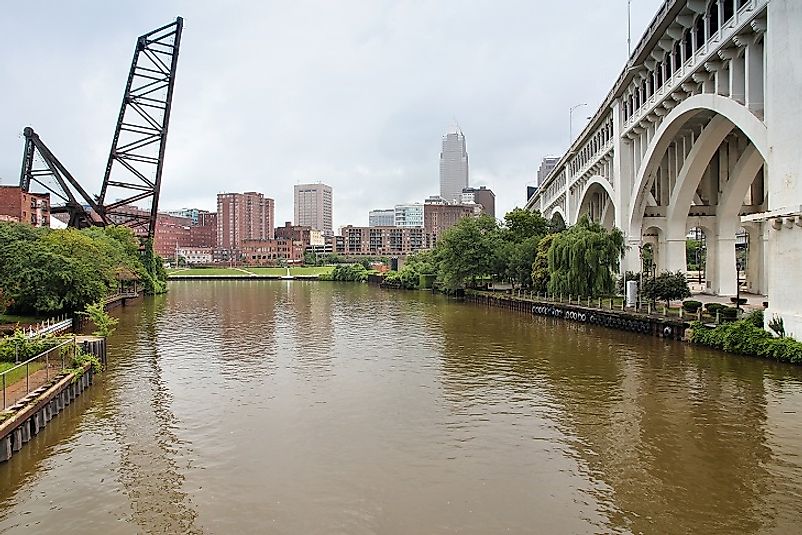The Cuyahoga River

5. Description
The Cuyahoga River is found to be located in northeastern Ohio in the United States, where it can be seen feeding Lake Erie, one of the North American Great Lakes. It is also known as the “river that caught fire”, and helped in starting a nationwide environmental movement in the late 1960s. It completes an 85-mile-long course, and is known to be draining an area of some 813 square miles. The Cuyahoga River has a total of 37 tributaries, and its upper stretch of 25 miles is also known as the "Scenic River of Ohio". The most well-known tributaries of the river are Tinkers Creek, Brandywine Creek, and Furnace Run, which also form notable gorges and waterfalls.
4. Historical Role
The Cuyahoga River is known by many alternative names, such as the "Crooked River" and the "Burning River", and it was formed by the glacial retreats occurring in the area circa 11,000 BC. It has a rich forest area, and Native American tribes traditionally living here once actively conducted hunting and fishing in the 100 miles of fertile lands extending from the river banks. The first European-American survey of the area now known as Cleveland, Ohio, was explored by Moses Cleaveland in the year 1796. It also has a remarkable place in the history as the “Treaty of Greenville” line runs across it, which was known to end the Northwest Indian War in the state of Ohio. During the 20th Century, it was said to be the most polluted river in the United States of America. The infamous fire that erupted in the river's polluted waters in 1969, which caused damage to railroad bridges and other infrastructural components, brought national attention to just how dirty the Cuyahoga was.
3. Modern Significance
The current mouth of the Cuyahoga River is actually man-made, and lies in the western part of the city of Cleveland. This artificially wide mouth even allows fir large ships to move freely between Lake Erie and the Cuyahoga River. For increasing the maritime activities, the river banks are being made straighter, and the basins are also still being widened outwardly. In an attempt to clean the river of its unwanted pollution, Federal, state, and local governments, as well as non-governmental agencies and private environmental groups, have already millions of dollars, especially over the past 20 years. The Cuyahoga River is serving the local communities, and it is also used for many recreational activities, is the shipping hub for Cleveland’s urban population, is home to a national park, and does so much more.
2. Habitat and Biodiversity
As various authorities and agencies have worked upon the clean up of the Cuyahoga over the last several decades, as many as 40 species of its native fish species have returned to the now clearer waters. These include the Northern pike and the Steel-head trout. Other species of animals and birds found in the area include Bald Eagles, Screech Owls, Raccoons, Great Blue Herons, and Beavers. Many of the species in the area were saved from the aftermath of industrial waste disposal by the clean up projects as well.
1. Environmental Threats and Territorial Disputes
The biggest threat that the Cuyahoga River is facing arises from the discharge of municipal sewage and other pollution into the area, which has caused many fish species to no longer live in the area. Other threats are being posed by the construction of dams, toxic waste, increased nutrient pollution, and several more threats that are being faced by the river. The pollution also has given rise to the proliferation of insect populations in the water. Despite fueling a "Green Movement" almost half a century ago, the Cuyahoga is still all too often plagued by the negative environmental impacts of irresponsible human activities.











